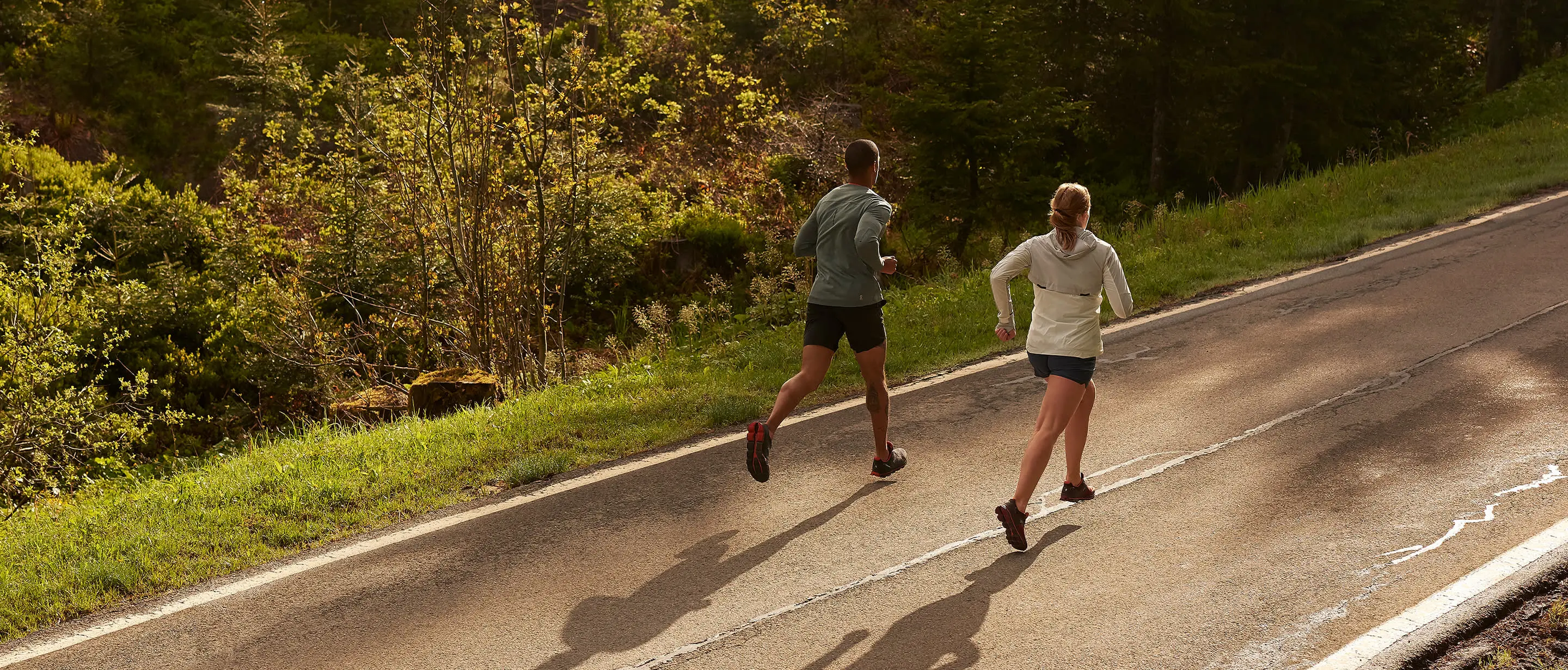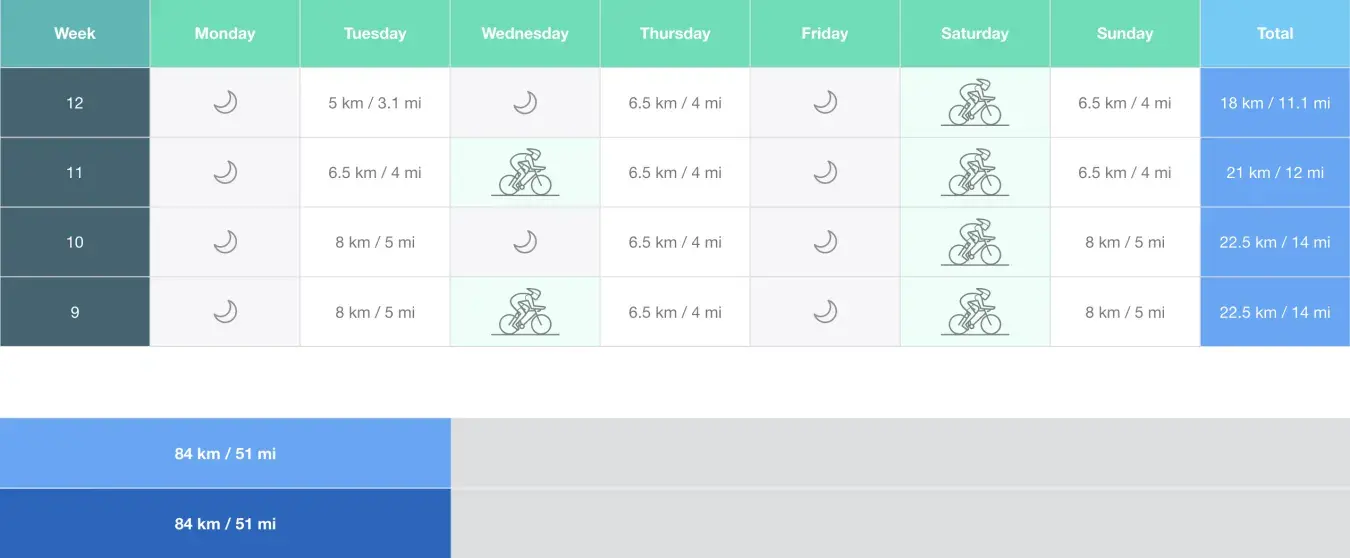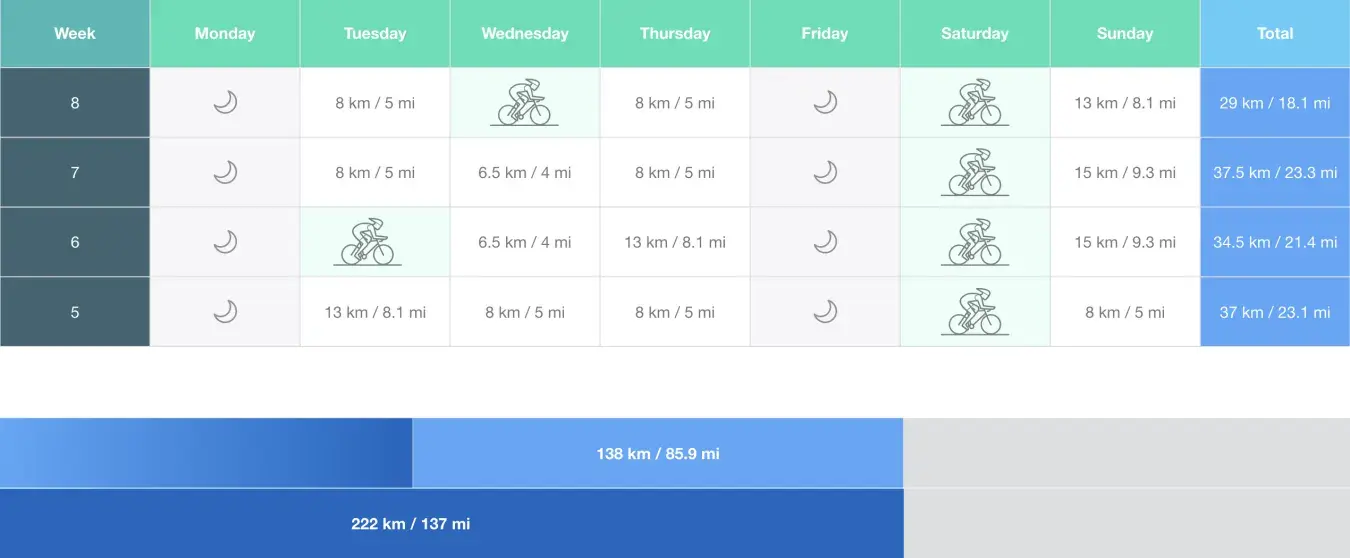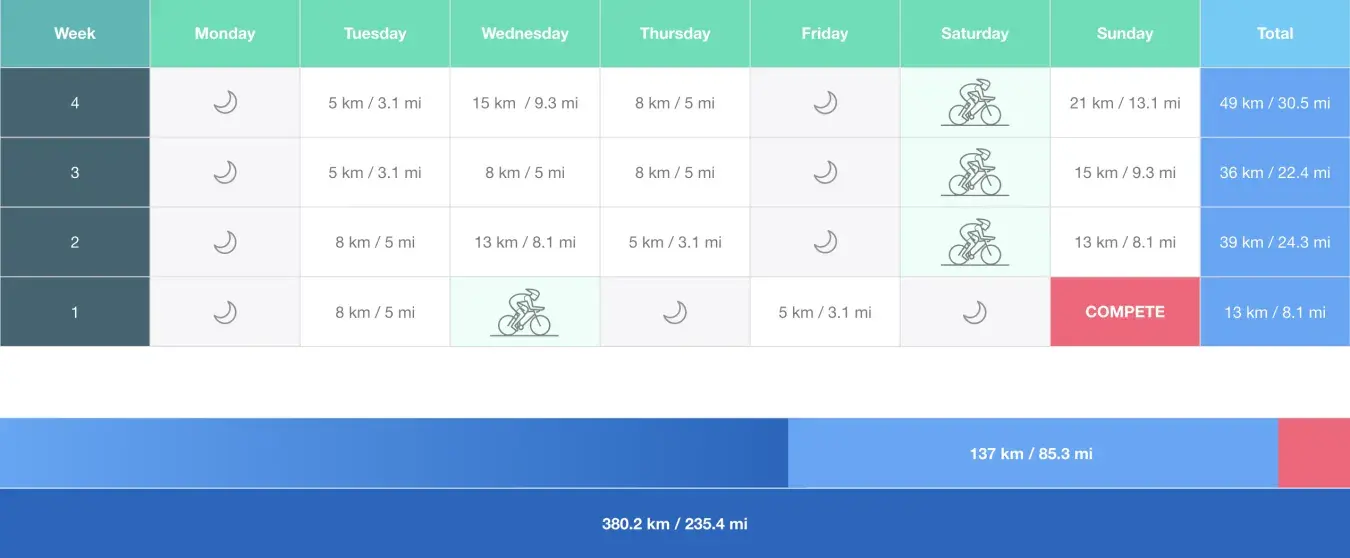

We cannot guarantee deliveries to the area. We hope to be back soon.
It may be your first step towards the full marathon. It may be your end goal. Whatever the reason, running a half marathon is a great thing to do; provided you follow the right plan to get you there.
For some people, the full marathon (42.2km / 26.2 miles) is simply too taxing on the body and too time-consuming. You need months of training, spending hundreds of hours to make yourself marathon ready, and for many, it robs the fun from the run. For the half marathon, however, you can train for a great race with a schedule that looks like a hobby (or, if you’re already running regularly, one that won’t completely reduce your free time). It’s also a great step to take on the path of chasing the full marathon finish down the road, with many runners doing a half marathon as marathon training early in their schedules. So if the half marathon is more your thing, we’ve gathered a sure-fire way to have you not only survive your first half marathon, but to thrive.
Your perfect half marathon training shoe
As you’ll be covering a lot of ground getting race ready, it’s likely you will go through at least two pairs of shoes getting you to the start line. As most half and full marathons are road races, it’s best to train on man-made surfaces and with shoes that do best (and that last) on that terrain. With the first training shoe you choose, support and stability are often things most runners setting out to do a race like this find they need, as the quantity of running tends to fatigue most feet. See our guide on finding the perfect road running shoes to help you find the pair best for you.
Your perfect half marathon race shoe (there’s a difference)
When you’re a few weeks out from go time, many runners opt to buy a final “new” pair of running shoes that they’ll wear on the day. Though professionals wear these straight out of the box on race day, DO NOT do this with your first half marathon. We’ve seen it happen and no matter how much you’re familiar with the shoe, a new pair always creates race day problems. Instead, get your race-day shoes ready at least a week out so you can wear them in readiness for the race, yet still have them feeling new enough. By the time you’re choosing your race day shoe, you’ll know better how you’re feeling for it, and what you might need, such as shoes with extra support, cushioning, more speed and so on.
Clothes and socks
So many runners take their time choosing the perfect race shoe, and then wear their oldest gear from the feet up when it comes to the run.
Proper running shorts, tees and singlets for instance, tend to use materials that help draw sweat away from the body, prevent friction (a god-send if you have problems with chafing), as well as tend to be lighter and often, contain anti-bacterial properties to prevent odor. To learn more about just how the right running gear can affect you, see On’s running apparel (there’s no excuse like training for a race to dress right for running). When it comes to socks, some people swear by high compression socks. If you haven’t run in them before, try them during your training before deciding on race day. When training, weather may often be a factor to consider things like running jumpers or jackets, gloves and so on. We recommend emulating what you will wear (likely shorts and a tee/singlet) come race day as much as possible in training, even when the weather is less than ideal, to condition yourself to know when these certain clothes come on means marathon time.
Track your runs
If you don’t already have one, now is the time to invest in some kind of run tracking device, like a GPS running watch or app on your phone. If anything, this is to know how far you’ve really run in all the months of training you’ll be doing (and watching your progress will be so satisfying the closer to the day you come). Many runners share their completed trainings on social networks like Strava and motivate themselves and others to top performances.
We have purposefully left food and diet recommendations out of this guide, as we wanted to focus on the training aspect and breakdown of runs needed for a half marathon. Needless to say, food plays a major role in both training and running these kinds of races, so be sure to eat well while following these guides.
You’re going to be sore. You’re going to be stiff. But other than that, with this guide you should feel great training and on the day. Of course, injuries happen and can happen in a multitude of ways. The most important thing is to always listen to your body and, if anything doesn’t feel right, see your doctor or physiotherapist right away.
That said, always do what you feel comfortable with and again, if anything feels wrong: Stop. Better to play it safe and take a week off resting than to push through and have a greater recovery time closer to the big day.
Rest: Take it easy on these days. It’s all about listening to your body. If you want to do a mixed training on these days because you feel good, that’s up to you of course, however it’s better to stretch and do an activity like yoga or Pilates on these days or simply nothing at all.
Mixed: One day over the weekend should be dedicated to another kind of sport to compliment the running you’re doing. This can be anything from hitting the gym to swimming, cycling to recreational sports with friends. The idea is that you at least push yourself to sweating point, and as a rule, the session should last more than 30 minutes. Other than that, it’s up to you what your mixed day exercise may be!
Saturdays and Sundays: Can be switched as needed, with the long run more important than the mixed workout (if time permits only 1 training over the weekend).
It begins with a single step, followed by another. Start slow, get in to the rhythm and enjoy the journey.


By now you’re in a rhythm and feeling great. Consistency is the key to a strong performance on race day, but also remember that it’s not the end of the world if you miss one or two sessions over the weeks.


The final month and final training sessions. By now you should be feeling good about the distance, so from here, building strength and stamina are key. In the final week, do the running you feel is right and be sure not to overdo it. When it comes to training, the real work has been done weeks in advance, so rest up before heading in to your final days before the race.


From here, it’s all you. You’re ready, you’re set, all that’s left is the go.